Cooking oil is a staple in any commercial kitchen that uses fryers to prepare food. It is also a substance that must be handled carefully because it can cause severe burns if mishandled when hot, and cooking oil spills can lead to injuries from slips and falls. Disposing of cooking oil improperly is also bad for the natural environment.
After cooking oil has been used, it must be collected and put into a proper storage container before it is picked up for cooking oil recycling by a professional like Mahoney Environmental. This means that the used cooking oil must be transported safely from the fryers to the oil collection tank. The used cooking oil can be transported using oil caddies that carry the oil to the grease tank or it can be sent to the tank without direct handling using a direct connection system.
When transporting used cooking oil, it is important for the oil to be handled properly and transported in approved containers. In this guide, we will cover what to do with used cooking oil to transport it safely to the cooking oil storage tank. We will discuss best practices for handling used cooking oil as well as how to use oil transport equipment available from Mahoney Environmental to safely transport the oil.
If your establishment is not part of a cooking oil recycling program, contact Mahoney Environmental to learn more about our used cooking oil collection services.
How to Safely Handle Cooking Oil
Whether storing fresh cooking oil, putting it in the fryers, or transporting it to the grease tank, cooking oil must be handled safely at all times. It is important for any employee that may handle fresh or used cooking oil to know the following:
- Read manufacturer recommendations and instructions: You should check the manufacturer instructions on the oil containers and equipment and follow them when storing, refilling, filtering, or disposing of cooking oil.
- Never touch hot cooking oil: When hot, cooking oil can cause third degree burns. Make sure you never touch hot cooking oil directly.
- Wait for oil to cool before handling: Because oil can cause severe burns, you should never handle it until it has cooled down. There is less of a chance of suffering burns from cooled cooking oil, but even when cooled, it may still be hot enough to cause burns.
- Wear the proper gear: When handling cooking oil, make sure you are wearing a face mask, gloves, full-body apron, and closed toe shoes for your protection.
- Use proper equipment to transfer cooking oil: You should only transport used cooking oil using proper equipment such as the Mahoney Shuttle or Caddy. Do not transfer used cooking oil in buckets, pots, or pans.
- Clean oil spills immediately: If any cooking oil spills, it needs to be cleaned to prevent slip and fall injuries. Use absorbent towels, cat litter, or Oil-Dri to soak up spilled oil.
- Announce yourself: If you are handling or transporting cooking oil, make sure you let other employees know so that they act responsibly around the oil.
- Have safety equipment handy: You should always have a working fire extinguisher and oil transport devices close by.
- Be ready to give first aid: Commercial kitchen employees should be trained to give first aid in case of burns and call 911.
Oil Transport Equipment from Mahoney Environmental
When it comes time to empty the used cooking oil from the fryers and take it to the collection tank, you must use proper equipment to transport the oil. Using unapproved containers like pots, pans, and buckets is more likely to lead to spills that can cause injuries.
Mahoney Environmental offers the following oil transport equipment that you can use to transport cooking oil safely in your kitchen:
1.Mahoney Shuttle
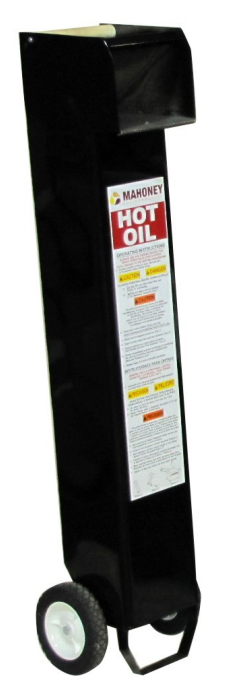 The Mahoney Shuttle is a transport device that allows for safe used cooking oil transport within a single establishment. The shuttle is designed to avoid direct contact with the cooking oil as much as possible.
The Mahoney Shuttle is a transport device that allows for safe used cooking oil transport within a single establishment. The shuttle is designed to avoid direct contact with the cooking oil as much as possible.
Follow these steps to use the Mahoney Shuttle:
- Make sure the oil has cooled to 150 degrees Fahrenheit before transport.
- Roll the shuttle to the fryer door and open the door.
- Attach the extender to the exit spigot on the fryer.
- Move the shuttle underneath the spigot and open the valve.
- Let all of the oil drain into the shuttle.
- Pick up the shuttle and remove the extender, then close the fryer door.
- Take the shuttle to the oil collection tank and open the tank lid.
- Put the shuttle in front of the tank and lift the bottom of the shuttle to empty the oil into the tank.
- Put the shuttle down and clean the screen beneath the tank lid.
- Close and lock the lid and wipe it dry.
- Never put anything other than used cooking oil into the tank.
2.Mahoney Caddy
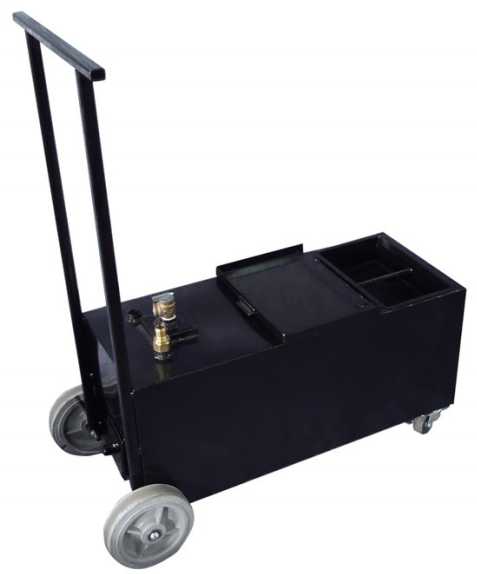 There are many venues such as malls, hotels, stadiums, airports, and others that have multiple restaurants or kitchens operating within them. In these large establishments, all of the food service providers bring their used cooking oil to the same large collection tank. However, it is the responsibility of each restaurant or kitchen to bring their used cooking oil to the tank using their own equipment.
There are many venues such as malls, hotels, stadiums, airports, and others that have multiple restaurants or kitchens operating within them. In these large establishments, all of the food service providers bring their used cooking oil to the same large collection tank. However, it is the responsibility of each restaurant or kitchen to bring their used cooking oil to the tank using their own equipment.
The Mahoney Caddy is an ideal oil transport device for taking used cooking oil to the collection tank in large venues. The caddy is designed to minimize exposure to hot cooking oil and ensure safe and easy transport.
Follow these steps when using the Mahoney Caddy:
- Wait for the cooking oil to cool.
- Roll the caddy to the fryer and open the fryer door.
- Put the caddy under the exit pipe on the fryer and open the caddy door.
- Open the valve on the fryer and let the oil empty into the caddy.
- Take the caddy to the collection tank.
- Attach the hose from the caddy to the nozzle on the tank.
- Make sure the hose is connected tightly.
- Push the start button on the tank to suck out the used cooking oil from the caddy.
3.Portable Filter Machine (PFM)
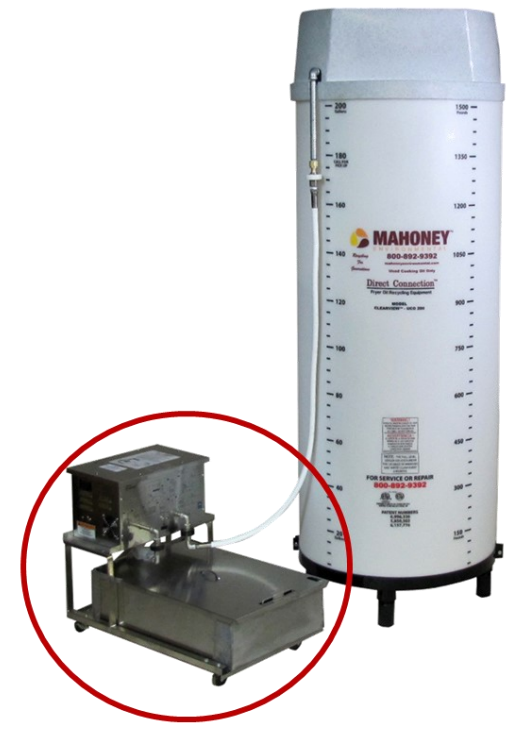 The Portable Filter machine (PFM) from Mahoney is one of the safest ways to transport used cooking oil because you will never have direct contact with the hot cooking oil. The following tips will help you transport used cooking oil using a standard PFM:
The Portable Filter machine (PFM) from Mahoney is one of the safest ways to transport used cooking oil because you will never have direct contact with the hot cooking oil. The following tips will help you transport used cooking oil using a standard PFM:
- Wait for the cooking oil to cool down to 150 degrees Fahrenheit or lower.
- Roll the PFM to the fryer and check the connection of the hose to the PFM.
- Disconnect the wand from the hose.
- Open the fryer door and put the PFM under the exit pipe.
- Remove the PFM lid.
- Make sure the screen is under the exit port and that there is filter paper in the PFM.
- Open the valve on the fryer and let the oil drain into the PFM.
- Take the PFM to the collection tank.
- Attach the hose from the PFM to the pipe extending from the tank.
- Connect the hose securely.
- Turn on the PFM and let the oil pump into the tank.
If you have a direct connection system that pumps used cooking oil to the collection tank, follow these tips to use the PFM:
- Roll the PFM to the fryer and make sure the hose is attached.
- Disconnect the wand from the hose.
- Open the fryer door and put the PFM under the fryer exit pipe.
- Connect the hose of the PFM to the Direct Connection port under the fryer.
- Remove the PFM lid.
- Make sure the screen is under the exit port and that the PFM has filter paper.
- Open the valve on the fryer and let the oil drain into the PFM.
- Open the Direct Connection valve.
- Turn on the PFM pump and motor to empty the used cooking oil into the collection tank through the Direct Connection piping.
4.Direct Connection System
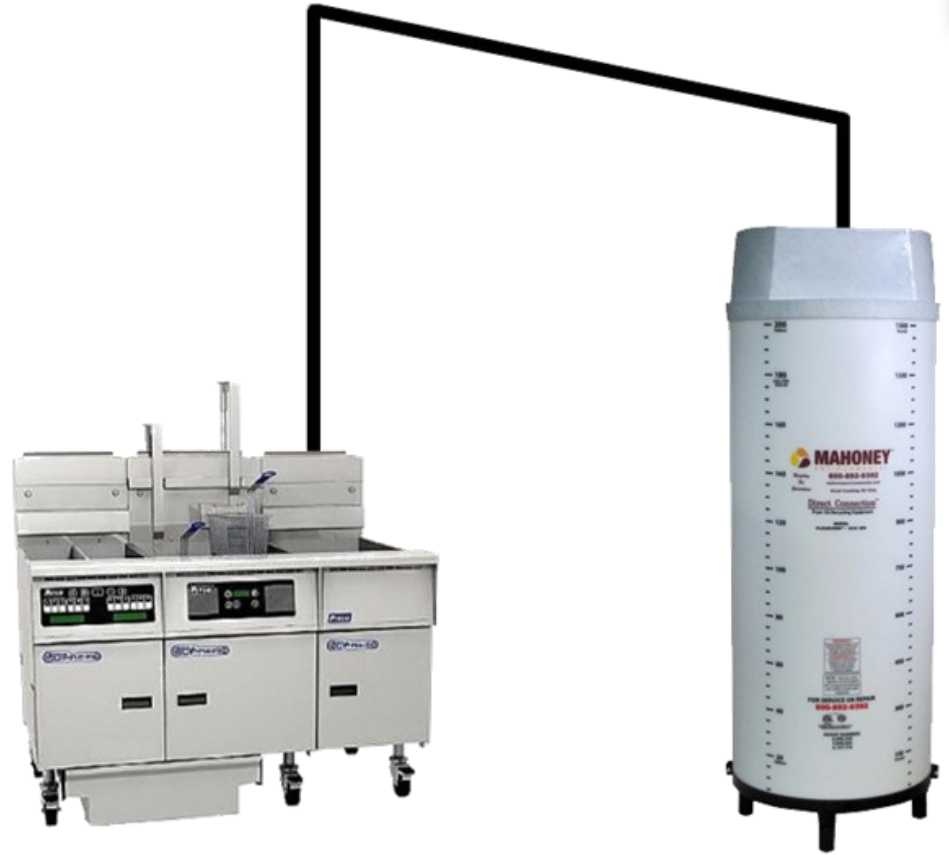 The Direct Connection system is the safest and most secure way to dispose of used cooking oil. These systems are closed loop systems in which all of the cooking oil is transported through piping, so no employees ever have to come into direct contact with the oil.
The Direct Connection system is the safest and most secure way to dispose of used cooking oil. These systems are closed loop systems in which all of the cooking oil is transported through piping, so no employees ever have to come into direct contact with the oil.
When sending used cooking oil to the collection tank in a Direct Connect system, follow these tips:
- Check that the filter pad is clean.
- Ensure that the cooking oil is at normal operating temperature.
- Make sure the “Tank Full” light and alarm are NOT activated.
- Find the Direct Connection oil disposal valve inside the fryer door.
- Drain the cooking oil into the fryer filter pan.
- Turn the used cooking oil disposal lever 90 degrees to start the pump and motor to pump the used cooking oil to the collection tank.
- Turn the oil disposal lever back 90 degrees into its original position when the filter pan is empty.
Cooking Oil Equipment and Used Cooking Oil Recycling from Mahoney Environmental
Cooking oil should always be handled safely to prevent spills, burns, and injuries, especially when transporting used cooking oil to the collection tanks. It is also highly recommended to use proper equipment for transporting the oil.
Mahoney Environmental can design and install cooking oil equipment to help you better handle the movement of your cooking oil and we offer products like the Mahoney Caddy and Mahoney Shuttle that can be safely used to transport used cooking oil. If you are not already taking advantage of our used cooking oil recycling services, call us right away at (800) 892-9392 to set up a cooking oil collection schedule.
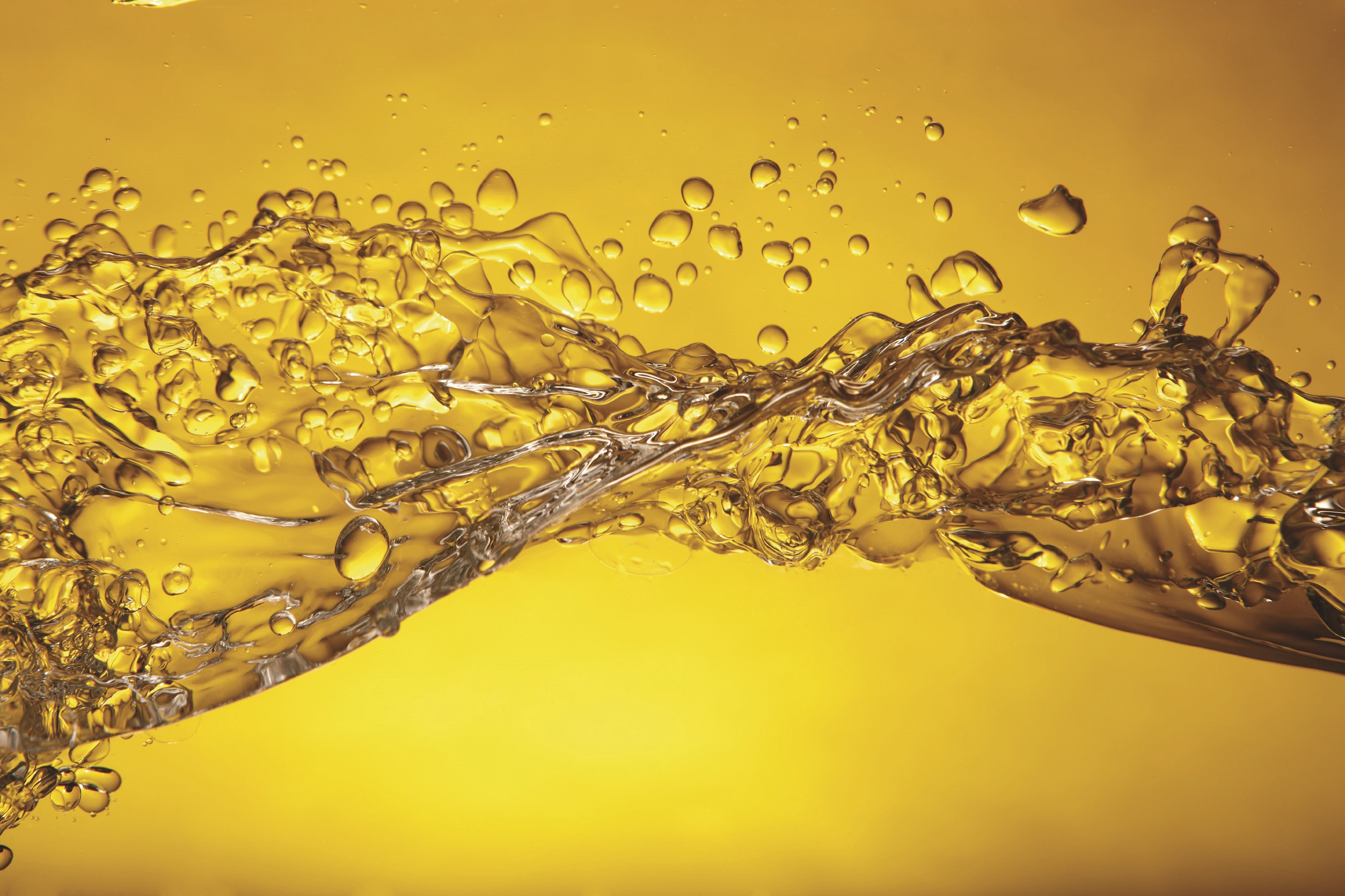
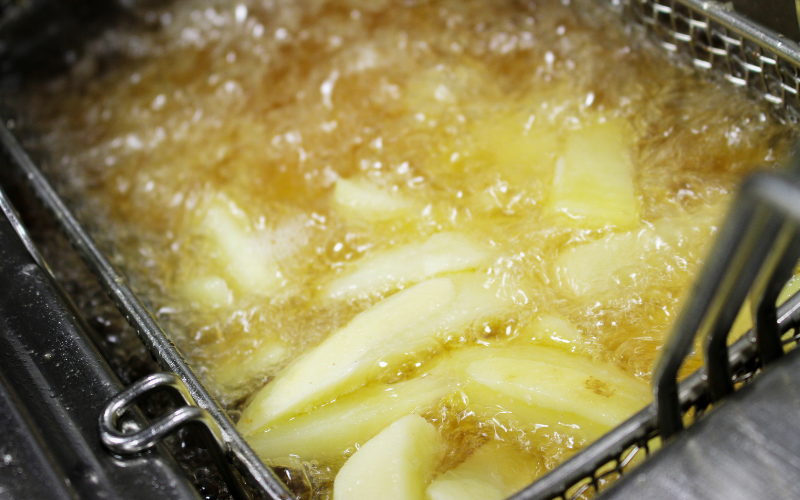
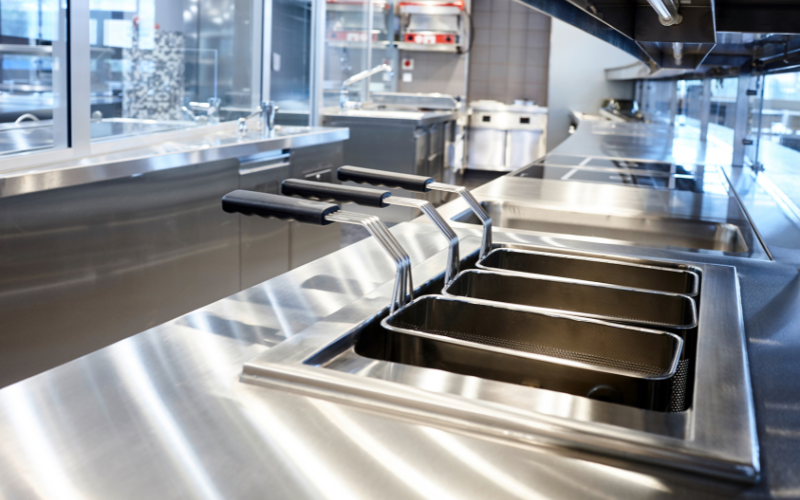
 Call Us Now (800) 892-9392
Call Us Now (800) 892-9392